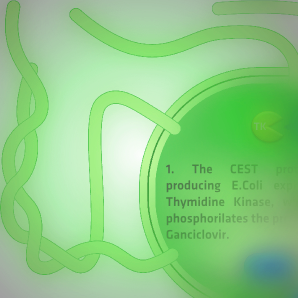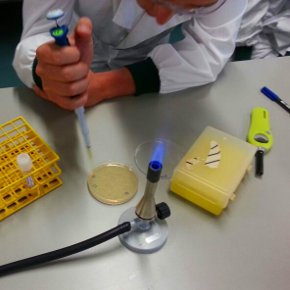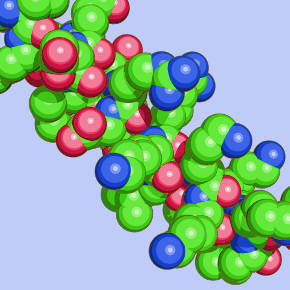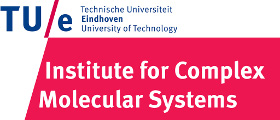Team:TU-Eindhoven
From 2013.igem.org
(Difference between revisions)
(→Project Description) |
Pascalaldo (Talk | contribs) |
||
| (85 intermediate revisions not shown) | |||
| Line 1: | Line 1: | ||
{{:Team:TU-Eindhoven/Template:Base}} | {{:Team:TU-Eindhoven/Template:Base}} | ||
{{:Team:TU-Eindhoven/Template:MenuBar}} | {{:Team:TU-Eindhoven/Template:MenuBar}} | ||
| - | + | <html></div> | |
| - | + | <div><div class="container"></div></div><div class="container"> | |
| - | Welcome to the homepage of the 2013 iGEM team | + | <div class="thumbnail" style="margin-bottom: 20px; height: 260px; background-color: #FFFFFF;"><div style="padding-left: 20px; padding-top: 10px; float: left;"></html> |
| - | + | ===Welcome to the homepage of the TU Eindhoven 2013 iGEM team.=== | |
| - | + | <br>{{:Team:TU-Eindhoven/Template:Quote | text=We will create bacteria that can detect tumors<br /> and visualize them on an MRI scan. | by=Mission Statement of the TU/e iGEM 2013 Team | position=left }} | |
| - | + | <html><div id="fb-root"></div> | |
| - | + | <script>(function(d, s, id) { | |
| - | + | var js, fjs = d.getElementsByTagName(s)[0]; | |
| - | We will | + | if (d.getElementById(id)) return; |
| - | + | js = d.createElement(s); js.id = id; | |
| - | + | js.src = "//connect.facebook.net/en_GB/all.js#xfbml=1"; | |
| - | + | fjs.parentNode.insertBefore(js, fjs); | |
| - | + | }(document, 'script', 'facebook-jssdk'));</script><div class="fb-like" data-href="http://www.facebook.com/iGEMEindhoven" data-send="false" data-layout="box_count" data-width="450" data-show-faces="false" style="height: 61px; margin-bottom: -61px; width: 50px; overflow: hidden;"></div></div><div style="float: right;"><img src="</html>{{filepath: projectOverview.jpg | nowiki}}<html>" style="width: 300px;" /></div></div></div> | |
| - | + | <div class="container"></html> | |
| - | + | ||
| - | + | ||
| - | + | ||
{{:Team:TU-Eindhoven/Template:FrontThumbnailGallery}} | {{:Team:TU-Eindhoven/Template:FrontThumbnailGallery}} | ||
| - | {{:Team:TU-Eindhoven/Template:FrontThumbnail | image= | + | {{:Team:TU-Eindhoven/Template:FrontThumbnail | image=TU-Eindhoven_Images_OurProject.jpg | link=/Team:TU-Eindhoven/Project | heading=Our Project | text=Visualizing tumors using bacteria? Find out what our project is all about! }} |
{{:Team:TU-Eindhoven/Template:FrontThumbnail | image=TU-Eindhoven_Images_MRIPromo.jpg | link=/Team:TU-Eindhoven/Wetlab | heading=Wetlab | text=Take a look at the results of the broad range of experiments performed this year. }} | {{:Team:TU-Eindhoven/Template:FrontThumbnail | image=TU-Eindhoven_Images_MRIPromo.jpg | link=/Team:TU-Eindhoven/Wetlab | heading=Wetlab | text=Take a look at the results of the broad range of experiments performed this year. }} | ||
{{:Team:TU-Eindhoven/Template:FrontThumbnail | image=TU-Eindhoven_Images_ProteinPromo.jpg | link=/Team:TU-Eindhoven/Modeling | heading=Drylab | text=Various simulations were carried out to support the wetlab experiments. }} | {{:Team:TU-Eindhoven/Template:FrontThumbnail | image=TU-Eindhoven_Images_ProteinPromo.jpg | link=/Team:TU-Eindhoven/Modeling | heading=Drylab | text=Various simulations were carried out to support the wetlab experiments. }} | ||
{{:Team:TU-Eindhoven/Template:FrontThumbnailGalleryEnd}} | {{:Team:TU-Eindhoven/Template:FrontThumbnailGalleryEnd}} | ||
| + | <html><div class="thumbnail" style="background: url('https://static.igem.org/mediawiki/2013/2/2d/TU-Eindhoven_Images_Header4.jpg') repeat-x center top !important; height: 150px;"><center><div style="font-size: 48pt; line-height: 48pt; text-algin: center; margin-top: 20px; font-weight: bold; color: #555555;">True. False. Inconclusive.</div><div style="font-size: 48pt; line-height: 48pt; text-algin: center; margin-top: -48pt; font-weight: bold; color: #555555;"><span id="tue-sf-true" style="color: #008000; opacity: 0.0;">True.</span> <span id="tue-sf-false" style="color: #FF0000; opacity: 0.0;">False.</span> <span id="tue-sf-undecided" style="color: #0000FF; opacity: 0.0;">Inconclusive.</span></div><br /><a class="btn btn-info" target="_blank" href="http://syntheticfacts.tue.nl">Which Facts are Synthetic?</a></center></div></html> | ||
| + | {{:Team:TU-Eindhoven/Template:BaseFooter}} | ||
{{:Team:TU-Eindhoven/Template:Sponsors}} | {{:Team:TU-Eindhoven/Template:Sponsors}} | ||
| - | |||
{{:Team:TU-Eindhoven/Template:SetTitle | menu=home | page=Home}} | {{:Team:TU-Eindhoven/Template:SetTitle | menu=home | page=Home}} | ||
| + | {{:Team:TU-Eindhoven/Template:SetHeader | nr=2}} | ||
| + | <html><script> | ||
| + | var timer = self.setInterval(function(){syntheticFactsAnimation()},11000); | ||
| + | |||
| + | function syntheticFactsAnimation(){ | ||
| + | $("#tue-sf-true").animate({opacity: 1.0},2000).delay(1000).animate({opacity: 0.0},2000); | ||
| + | $("#tue-sf-false").delay(3000).animate({opacity: 1.0},2000).delay(1000).animate({opacity: 0.0},2000); | ||
| + | $("#tue-sf-undecided").delay(6000).animate({opacity: 1.0},2000).delay(1000).animate({opacity: 0.0},2000); | ||
| + | } | ||
| + | window.onload=function(){syntheticFactsAnimation()}; | ||
| + | </script></html> | ||
Latest revision as of 12:52, 26 October 2013



Welcome to the homepage of the TU Eindhoven 2013 iGEM team.
We will create bacteria that can detect tumors
Mission Statement of the TU/e iGEM 2013 Team
and visualize them on an MRI scan.


Our Project
Visualizing tumors using bacteria? Find out what our project is all about!
Learn more...
Wetlab
Take a look at the results of the broad range of experiments performed this year.
Learn more...
Drylab
Various simulations were carried out to support the wetlab experiments.
Learn more...
True. False. Inconclusive.
True. False. Inconclusive.
Which Facts are Synthetic?
 "
"



